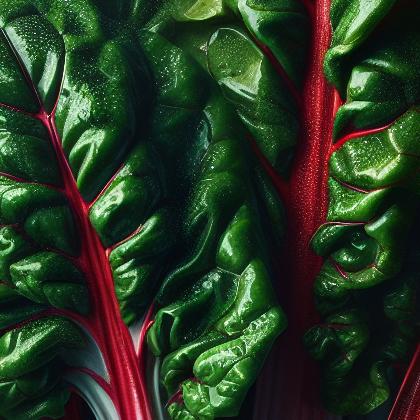Showing results for 'Swiss chard'
close
Swiss Chard

Chard (Beta vulgaris subsp. vulgaris, Cicla-Group and Flavescens-Group) is a leafy green vegetable often used in Mediterranean cooking. In the Flavescens-Group-cultivars, the leaf stalks are large and are often prepared separately from the leaf blade.[2] The leaf blade can be green or reddish in color; the leaf stalks also vary in color, usually white, yellow, or red.[3] Chard has highly nutritious leaves making it a popular addition to healthful diets (like other green leafy vegetables).[4] Chard has been around for centuries, but because of its similarity to other beets and some other vegetables such as cardoon, the common names used by cooks over the centuries can be quite confusing.
Swiss chard Properties:
| Food Property | Type | Description |
|---|---|---|
| Flavor Profile | Bitter | Swiss chard has a slightly bitter flavor which can be mellowed out through cooking or pairing with other ingredients. |
| Texture | Firmness | Swiss chard leaves have a firm texture when raw, but become more tender when cooked. |
| Nutritional Value | Macronutrients | Swiss chard is a good source of macronutrients such as vitamins A, K, and C, as well as minerals like magnesium, potassium, and iron. |
| Fiber | Swiss chard is high in fiber, which can aid in digestion and promote feelings of fullness. | |
| Color | Natural Pigments | Swiss chard has vibrant green leaves and stems, which come from natural pigments like chlorophyll and carotenoids. |
| Aroma | Volatile Compounds | When cooked, Swiss chard releases aromatic compounds that add to its overall flavor profile. |
Food Pairing App - Version 1.2.0
